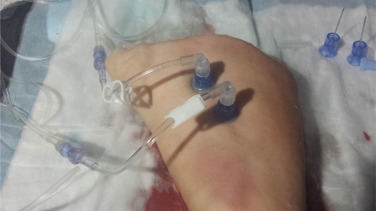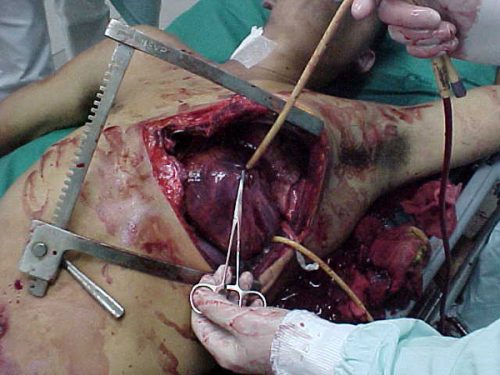Intraosseous lines (IO) make life easy. They are quicker to insert, have a higher success rate, and require less experience than a standard IV. And they can be used for pretty much any solution or drug that can be given through an IV.
But there are some limitations. They can’t be inserted into a fractured bone. The manufacturer cautions against multiple insertions into the same bone. A second insertion should not be performed in the same bone within 48 hours.
But, as with so many things in medicine, there is little in the way of proof for these assertions. They seem like good ideas for precautions, but that does not mean they are correct. No real research has been done in this area. Until now.
The concept of using two IO needles in one bone was explored in an animal model by researchers in Canada. They used a swine model (using the foreleg/humerus, to be exact), and tested several infusion setups.

Here are the factoids:
- Infusing crystalloid using an infusion pump set to 999ml/hr took 30 minutes with a single IO, and 15 minutes with a “double-barrel” setup
- Giving crystalloid using a pressure bag set at 300 mm/Hg took 24 minutes with a single IO, and 23 minutes with double the fun
- The double-barrel setup also worked for a blood/drug combo. 250cc of blood and 1 gm of TXA in 100ml of saline infused via pump in 13 minutes.
- Simultaneous anesthesia drugs (ketamine infusion in IO #1, fentanyl and rocuronium bolus in IO #2) without problems
- Multiple fluid + drug infusion combinations were tested without incident
- There were no needle dislodgements, soft tissue injuries, fractures, or macrohistologic damage to the bone or periosteum
Bottom line: Remember, these are pigs. Don’t do this in humans yet. However, this is pretty compelling evidence that the double-barrel IO concept will work in people. And it appears that infusion pumps must be used for effective, fast infusions. I recommend that prehospital agencies with inquiring minds set up a study in people to prove that this works in us, too.
Related posts:
Reference: Double-barrelled resuscitation: A feasibility and simulation study of dual-intraosseous needles into a single humerus. Injury 46(11):2239-42, 2015.


